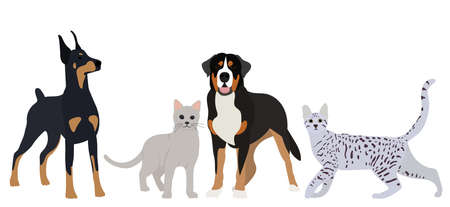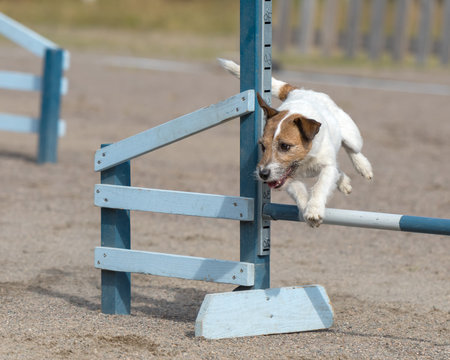1. Understanding Healthy Weight for Your Dog
Keeping your dog at a healthy weight is one of the best ways to support their overall well-being and help them live a longer, happier life. But how do you know if your dog is at an ideal weight? It’s not always as simple as stepping on a scale, since healthy weights can vary by breed, age, and body type.
How to Check Your Dog’s Body Condition
One easy way to assess if your pup is at a healthy weight is by checking their body condition. Here’s a quick guide:
| Body Area | What to Look For |
|---|---|
| Ribs | You should be able to feel (but not see) your dog’s ribs easily when you run your hands along their sides. |
| Waist | Your dog should have a visible waist behind the ribs when viewed from above. |
| Belly | The belly should tuck up behind the ribcage when viewed from the side, rather than hanging down. |
Why Maintaining a Healthy Weight Matters
Dogs that carry extra pounds are at higher risk for health problems like diabetes, arthritis, heart disease, and even some cancers. Extra weight can also make it harder for your dog to enjoy walks or playtime, leading to less exercise and more weight gain—a tough cycle to break.
The Role of Your Veterinarian
If you’re unsure about your dog’s ideal weight or body condition, your veterinarian is your best resource. During regular checkups, vets can use body condition scoring charts and weigh-ins to give you personalized advice. They can also help rule out any underlying medical issues that might affect your pet’s weight.
2. The Importance of Regular Exercise
Why Daily Activity Matters for Your Dog
Just like people, dogs need regular exercise to stay happy and healthy. Daily physical activity helps your dog burn off energy, manage their weight, and reduce stress or anxiety. When your dog moves more, it keeps their muscles strong, their heart healthy, and supports their overall well-being.
Top Benefits of Exercise for Dogs
| Benefit | Description |
|---|---|
| Weight Control | Exercise helps prevent obesity by burning calories and boosting metabolism. |
| Joint Health | Keeps joints flexible and can slow the progress of arthritis. |
| Mental Stimulation | Physical activities challenge your dog’s mind, reducing boredom and destructive behavior. |
| Social Skills | Walks and playdates help dogs socialize with people and other pets. |
| Stronger Bond | Spending active time together builds trust and deepens your relationship. |
Popular Types of Dog-Friendly Exercises in the U.S.
The U.S. offers many ways for you and your pup to stay active together. Here are some favorites:
Neighborhood Walks
A daily walk is simple but effective. Most dogs love exploring new smells and sights around the block or at a local park.
Dog Parks & Playdates
Letting your dog run and play off-leash in fenced-in dog parks is great for high-energy breeds. Socializing with other dogs also improves their confidence.
Fetch & Tug-of-War
Playing fetch in the backyard or tug-of-war indoors provides a quick burst of activity that most dogs enjoy. These games are especially helpful on rainy days when outdoor walks aren’t possible.
Hiking & Nature Trails
If you live near hiking trails or green spaces, bring your dog along for an adventure. Many American families spend weekends exploring nature with their pets.
Agility & Obedience Classes
Many communities offer agility courses or obedience training, which combine physical activity with mental challenges—perfect for energetic or highly intelligent breeds.
How Exercise Prevents Obesity and Health Issues
Lack of exercise is a leading cause of obesity in dogs. Extra pounds put strain on your dog’s joints, heart, and organs, leading to conditions like diabetes, arthritis, and even shortened lifespans. Regular physical activity burns calories, builds muscle mass (which increases metabolism), and keeps your pet’s body functioning properly. Active dogs are less likely to develop chronic health problems and tend to live longer, healthier lives.

3. Customizing Exercise Routines by Breed and Age
Every dog is unique, and their exercise needs can vary a lot depending on their breed, age, and health. Creating a fitness plan tailored to your dog ensures they stay healthy, happy, and at the right weight. Here’s how you can personalize exercise routines for your furry friend:
Breed-Specific Exercise Needs
Some breeds are natural athletes, while others are more laid-back. Knowing your dog’s breed traits helps you pick the best activities for them.
| Breed Type | Exercise Needs | Recommended Activities |
|---|---|---|
| High-Energy Breeds (e.g., Border Collie, Labrador Retriever) | 60-120 mins daily | Running, fetch, agility training, hiking |
| Moderate-Energy Breeds (e.g., Beagle, Bulldog) | 30-60 mins daily | Walks, playtime in yard, short runs |
| Low-Energy Breeds (e.g., Basset Hound, Shih Tzu) | 20-40 mins daily | Leisurely walks, gentle games indoors |
Adjusting for Your Dog’s Age
Puppies, adults, and senior dogs all have different needs. It’s important to match their activity level with what’s right for their life stage.
| Life Stage | Activity Suggestions | Cautions |
|---|---|---|
| Puppies (under 1 year) | Short bursts of play, frequent potty breaks, basic training games | Avoid high-impact exercise to protect joints; monitor for tiredness |
| Adult Dogs (1-7 years) | Regular walks/runs, interactive games like fetch or frisbee, obedience training | Avoid over-exercising in hot weather; keep activities fun and varied |
| Seniors (7+ years) | Smooth walks, swimming, gentle games to keep them moving but not exhausted | Watch for stiffness or soreness; focus on low-impact activities |
Factoring in Health Status
If your dog has special health considerations—like arthritis or heart issues—talk to your vet before starting a new exercise routine. They may suggest activities like swimming or slow-paced walks that are easier on the joints.
Quick Tips for All Dogs:
- Always provide fresh water during and after exercise.
- Avoid intense activity during the hottest part of the day.
- Praise your dog and make exercise fun so they look forward to it!
- If you’re unsure about your dog’s limits, start slow and watch how they respond.
Customizing your dog’s exercise routine by breed and age helps keep them fit while preventing injuries or stress. With a little planning and attention to your pup’s needs, you’ll both enjoy staying active together!
4. Nutrition and Portion Control
Choosing High-Quality Dog Food
Feeding your dog the right food is just as important as regular exercise. In the U.S., many pet owners look for high-quality dog foods that list real meat, vegetables, and whole grains as their main ingredients. Avoid foods with fillers like corn, soy, or artificial additives. Look for brands that meet AAFCO (Association of American Feed Control Officials) standards, which ensures the food meets nutritional requirements.
Understanding Proper Portion Sizes
Portion control is a key part of weight management for dogs. Feeding too much—even healthy food—can lead to weight gain. The amount your dog needs depends on factors like age, size, breed, and activity level. Here’s a simple table to help you estimate daily portions:
| Dog Weight | Daily Food Amount (Cups) | Notes |
|---|---|---|
| Under 10 lbs | 1/4 – 1/2 cup | Toy breeds & puppies |
| 10-25 lbs | 1/2 – 1 cup | Small breeds |
| 25-50 lbs | 1 – 2 cups | Medium breeds |
| 50-100 lbs | 2 – 4 cups | Large breeds |
| Over 100 lbs | 4+ cups | Giant breeds (adjust as needed) |
*Always check the feeding guidelines on your dog food bag and adjust based on your vet’s advice.
American Feeding Habits: Preventing Overfeeding
In American homes, it’s common to feed dogs two meals a day—once in the morning and once in the evening. Free-feeding (leaving food out all day) can lead to overeating and should be avoided unless recommended by your vet. Use measuring cups instead of guessing when serving meals, and limit treats to no more than 10% of your dog’s daily calories. Remember, treats are not a substitute for balanced nutrition!
5. Monitoring Progress and Making Adjustments
Ideas for Tracking Your Dog’s Weight
Keeping tabs on your dog’s weight is key to making sure their exercise and diet plan is working. Here are some easy ways to track your dog’s progress:
| Method | How Often | Tips |
|---|---|---|
| Weigh-ins at Home | Every 2-4 weeks | Use a bathroom scale (weigh yourself first, then with your dog) or visit a pet store with a public scale. |
| Body Condition Score (BCS) | Monthly | Ask your vet for a BCS chart; check if ribs are easily felt but not seen, and waist is visible. |
| Photo Diary | Monthly | Take side-profile photos in the same spot for visual progress. |
Signs of Improvement or Concern
Noticing changes in your dog’s body and energy level can help you know if things are going well or if you need to adjust. Here are some signs to watch for:
Positive Signs
- Your dog has more energy during walks and playtime.
- You can feel your dog’s ribs without pressing hard, but they’re not visible.
- Your dog has a defined waist when viewed from above.
- Your pup seems happier and more comfortable moving around.
Warning Signs to Watch Out For
- Your dog loses weight too quickly (over 1-2% of body weight per week).
- Lack of energy or reluctance to exercise.
- Limping, stiffness, or other signs of pain.
- No change in weight after several weeks of effort.
When to Check in with Your Veterinarian
If you notice any warning signs, sudden changes in weight, or have concerns about your dog’s activity level or appetite, it’s time to talk to your vet. Regular veterinary check-ups are also helpful for professional weigh-ins and advice on adjusting your plan. Remember, every dog is different—your vet can help tailor an approach that fits your dog’s unique needs.


